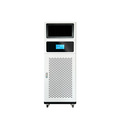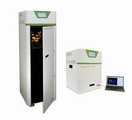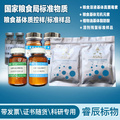COSMOtherm Version C3.0 Release 15.01
主要升级特点一览:
显著改善BP-TZVPD-FINE预测精度
多个应用增加了新特点并改进了算法
增强了用户图形界面COSMOthermX的功能
升级特点详细描述:
1.COSMOtherm精度与适用性:
精度:高精度预测方法BP-TZVPD-FINE包含了先进的氢键能描述项HB2012,新版COSMOtherm中增加了最新的描述残余电介质修正(RDC),适合描述中程静电相互作用。RDC项的增加全面提高定性和定量预测精度。
针对高精度计算方法(BP-TZVPD-FINE)、产品级别精度计算方法(BP-TZVP-COSMO和DMOL3-PBE)和筛选级别精度计算方法(BP-SVP-AM1)COSMOtherm参数进行了重新优化,包括优化拟合数据源化合物选择和验证数据源化合物选择,另外异构体的选择也进行了精心的优化。
适用性:高精度计算方法BP-TZVPD-FINE预测速度得到了显著提高(根据化合物大小和复杂成度不同,大约提高1~3倍)。
2. COSMOtherm新功能和扩展功能:
界面张力预测(IFT):COSMOthermX增加了四种模型,预测两种混溶液体之间表面张力的功能模块。其中三种模型是QSPR模型,依赖于IFT经验关系和COSMOtherm预测的液-液相分离浓度或溶剂-溶剂溶解度。
上述经验模型适用于室温和纯溶剂相,并且必须包含纯水为给定相。三种经验IFT模型嵌入到COSMOthermX界面的“Environmental Properties”选项卡中。另一种,基于COSMOtherm的FLATSURF方法的迭代、自洽计算功能模块在COSMOthermX的IFT选项卡中。虽然IFT迭代方法预测,比经验方法需要更多的计算资源,但是没有温度和混合方面的限制。
聚合物性质计算得到了显著地简化,是通过嵌入Elbro等1提出的聚合物自由体积组合项到COSMOtherm和COSMOthermX实现的。Elbro组合项结合输入的表观分子量,允许COSMOtherm或COSMOthermX定量预测聚合物性质2。
溶解度和盐溶解度计算功能扩展到最高级别计算精度方法SELSOL,可精确预测固液平衡和液液平衡。因此,没有任何歧义的前提下溶解度预测是可能的。
针对所有气液、液液和固液平衡相图计算(包括二元、三元和多元),提高了默认参数设置下计算精度并且相图计算格点采取方法从摩尔百分比扩展到质量和体积百分比。
所有二元或三元相图计算(包括气液、液液和固液平衡),其中每种相都可以是多个化合物组成的混合物,也可以是由化学计量比组成的离子或中性化合物组成。
多组分多相液体萃取,二元、三元和多元液液相平衡预测中溶解度自洽计算算法变得更为稳定强壮。特别是气相liq_ex计算得到了很大的改进。
COSMOmic内嵌到COSMOtherm模块中,操作更为简便,其中“.mic-files”包含了所有描述胶束的必要信息。
接触面统计的图形化显示得到了改进,用户根据该功能更为精确的计算接触面统计和描述计算结果。
QSPR性质可在不同温度和混合物条件下进行(Mix-QSPR选项卡),并针对所有异构体进行平均。其结果将输出到专门的QSPR输出结果表格中。
3. COSMOthermX 图形用户界面(GUI):
2013年12月重新设计的COSMOthermX得到了改进和整合。可同时在GUI平台上高效的、交互的进行多个任务的运行和分析。COSMOthermX中引入了新的批处理和筛选功能,如计算一定温度范围和浓度范围内的性质计算。最新的“Look & Feel”进一步增强了图形用户界面的可用性。
可操作实验数据(如饱和增气压),用户根据需要选择数据,并且规避某些数据的选择。
修改了标准的数据库界面,用户可以更方便、直观的在多个数据库中进行数据搜索。另外,软件启动的时数据库将在后台自动加载,因此GUI将在整个数据库启动之前开始工作,大大提高了COSMOthermX的启动速度。
增加了自由的文本操作界面,供用户方便操作GUI尚未包含的计算功能设置。
4. 改进BP-TZVPD-FINE
2011年引入的BP-TZVPD-FINE得到了很大的改进。除前几年的改进,本次重点增加了相互作用微表面电荷形成的偶极子电介质相互作用计算的修正,细节将2015年发表。经典的COSMO-RS理论认为,氢键能正比于由可提供氢键的原子组成的表面数量。 相反,2011年引入的TZVPD-FINE认为氢键-焓是由氢键的给体和受体原子数目决定,而氢键-熵由给体和受体表面数量和极性决定。
目前BP-TZVPD-FINE包括如下特点:
· Residual Dielectric Correction (RDC) (New Dec. 2014)
· Dispersion energies based on Grimme’s D3 method3 (Dec. 2013)
· Dispersion correction to the HB interaction energy (Dec. 2013)
· Entropic contribution of HB acceptor sites (Dec. 2012)
· New hydrogen bonding physics (Dec. 2011)
· Steric hindrance for hydrogen bonding (Dec. 2011)
· Inclusion of some hydrogen bonding cooperativity effects (Dec. 2011)
· New quantum chemical level (BP-TZVPD) (Dec. 2011)
· Improved cavity construction (FINE-cavity) (Dec. 2011)
1 Elbro, H. S.; Fredenslund, A.; Rasmussen, P. A. Macromolecules 23, 4707 (1990).
2 Loschen, C.; Klamt, A. Ind. Eng. Chem. Res. 53, 11478 (2014).
3 Grimme, S.; Antony, J.; Ehrlich, S.; Krieg, H. J. Chem. Phys. 1 3 2, 154104 (2010).
Details on the residual dielectric correction term (RDC)
In classic COSMORS the electrostatic misfit energy is calculated locally for surface patches in close contact. This way any nonlocal,
long range electrostatic interactions are neglected.However, in the COSMO-RS ensemble of contacting molecular charge surface patches situations may occur, where contacting surface patches with different
charges cancel out only partly and a certain amount of charge residue is left on the molecule’s surfaces. The interaction of the residual
surface charges can be relevant in some cases, but in classic COSMO-RS it is neglected. In particular, if the residual surface charges form a dipole (or even have a total charge), then long range electrostatic
interactions will become relevant (e.g. a nonpolar solute like hexane in a polar solvent like DMSO). This is the main source of the long-standing COSMO-RS problem with dipolar-aprotic solvents, also known as the “DMSO-issue”. As a solution to this problematic subject, the so called Residual Dielectric Correction (RDC) term was introduced into the
BPTZVPD-FINE level COSMO-RS theory. The basic idea of the RDC term is that long range electrostatic interactions (nth order solvation shells) can be described by a COSMORSinherent dielectric continuum model in analogy to the quantum chemical COSMO model. The residual charge is screened
by a polarizable dielectric continuum representing the first solvation shell. In addition, the second solvation shell screening due to
solvent reorientation around the first solvation shell is taken into account. The resulting dielectric energy depends on the dielectric
constant of the solvent/mixture in terms of its static permittivity ? and refractive index n2.
Although the charge distribution on a molecule is now treated within a solvent continuum, the long range Coulomb interactions between
ionic species are not accounted for. This means that the residual dielectric correction does not attempt to replace a Pitzer-Debye-Hückel term or a similar correction term for the electrostatic long range interaction of hard ions.Advantages of the new RDC term:
The expectable root mean square error of BP-TZVPD-FINE-C30-1501 parameterization is now smaller than 0.4 kcal/mol, which is an improvement by 0.03 kcal/mol over the BP-TZVPD-
FINE parameterization 1401 of December 2013 and by 0.1 kcal/mol over the current TZVP parameterization. Dipolar aprotic
solvent compounds such as dimethylsulfoxide (DMSO), or dimethylformamide (DMF) have profited the most from the RDC term.
Their prediction error is reduced by up to 0.5 kcal/mol and is now in the same range as the overall expectable error.
Disadvantages of the new RDC term:
Although the construction and evaluation of the RDC term is time consuming and
computationally demanding, the loss of computation speed has been more than made up for by
other speed enhancements in the FINE level’s HB2012 hydrogen bonding term (as noted in
section 1, above). Thus, altogether the calculation speed of FINE 1501 is faster than that of all
previous FINE versions. A slight backdraw of the new RDC term is its usage of estimated values for the squared refraction index
n2 and the dielectric constant ?. Though these estimations are good enough to provide an overall benefit, some rare molecules,
however, might get bad estimations. It is possible to use experimental data for such cases.










![聚酰胺粉 [柱层析用,高分离性能] 60-100目/80-120目/100-200目](https://p-06.caigou.com.cn/135x120/2024/7/2024071513085253637.jpg)







